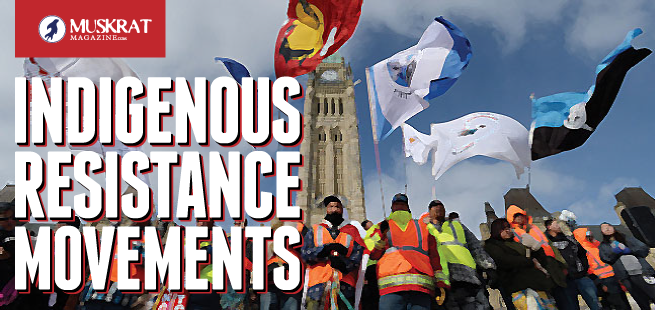“Time is not on our side…leaders must act,” Fortunately, Indigenous people have been organizing against the negative impacts of resource extraction since contact…
The Fifth Assessment of the Synthesis Report from the Intergovernmental Panel on Climate Change (IPCC) was released on November 2, 2014. The report confirms yet again what Indigenous people have been warning for years: If we do not respect the relationship between humans and the natural world, catastrophic impacts will result.
UN Secretary-General Ban Ki-moon said that if the world maintains its ‘business as usual’ attitude about climate change, the opportunity to keep temperature rise below the internationally target of two degrees Celsius, “will slip away within the next decade…With this latest report, science has spoken yet again and with more clarity. Time is not on our side…leaders must act.”
Fortunately, Indigenous people have been organizing against the negative impacts of resource extraction since Contact and have much valuable knowledge to share in finding solutions. Whether it is asserting inherent and treaty rights to protect and manage traditional land, water ways, and to engage traditional knowledge, Indigenous grassroots action is organized and strong. Want to do something positive in the interests of the next seven generations to come? Here are some important sites of resistance across Turtle Island that you can reach out to and ask about how you can contribute. Let us know who you support in your community!
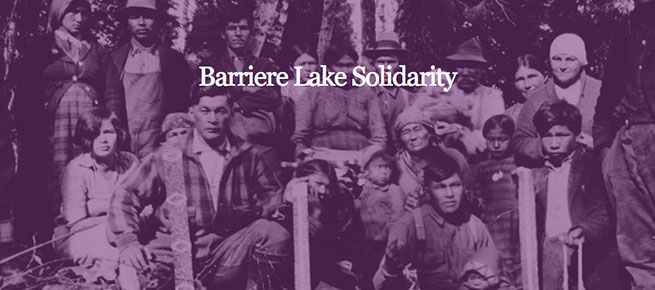
The Algonquins of Barriere Lake (ABL) are a First Nation who hunt, fish, trap and harvest on more than 10,000 square kilometres of territory north of Ottawa in what is now called Quebec. The community attributes the strength of their Algonquin language, their culture, and their protection of the land to the endurance of their own governance system, the Mitchikanibikok Anishinabe Onakinakewin.
The ABL face a land and governance struggle against the Canadian Government. Since 1991 this dispute hinges on a Trilateral Agreement, which both the Federal and Provincial governments have signed, but have failed to honour.

Defenders of the Land is a network of Indigenous communities and activists in land struggles across Canada. Including Elders and youth, women and men, Defenders of the Land was founded at a historic meeting in Winnipeg in 2008. Defenders is Indigenous-led, free of government or corporate funding, and dedicated to building a fundamental movement for Indigenous rights.
3. FAMILIES OF SISTERS IN SPIRIT

There are multiple connections between the rape of Mother Earth and violence directed against Indigenous women. Direct links such as resource extraction projects like the tar sands link to the degradation of traditional lifestyles and as well as sex trafficking. There is also an internalized perception that in order to colonize Indigenous land, Indigenous women must also be subjugated.
Families of Sisters in Spirit (FSIS) is a volunteer, grassroots, non-profit organization led by families of missing and murdered Aboriginal women and girls. FSIS is dedicated to documenting the epidemic of violence faced by Indigenous women and girls in Canada and works to identify the root causes of this trend and work towards solutions.
4. JOIN HUPACASATH COURT CHALLENGE 2 CANADA-CHINA FIPA

The Acanthus First Nation has been waging a legal battle on behalf of all Indigenous people and Canadian citizens, with the Canadian government for judicial review of the Foreign Investment Promotion and Protection Agreement, also known as FIPA or FIPPA.
The agreement is between Canada and China, and will allow Chinese corporations to bring workers to Canada, develop on unceded lands and anywhere they decide to extract energy resources. If there is an intervention from Canadians, FIPA will empower the Chinese corporation to sue for loss-of-profit in a secret tribunal.
In September 2014, Stephen Harper ratified FIPA, effective October 1, 2014. FIPA will be in effect for 31 years. Hupacasath First Nation continues to work to put a stop to this bill, which did not consult First Nations but that will have direct impacts on Indigenous communities across Canada. Hupacasath needs the support of Canadians now more than ever! Find out how you can get involved here.
5. IDLE NO MORE
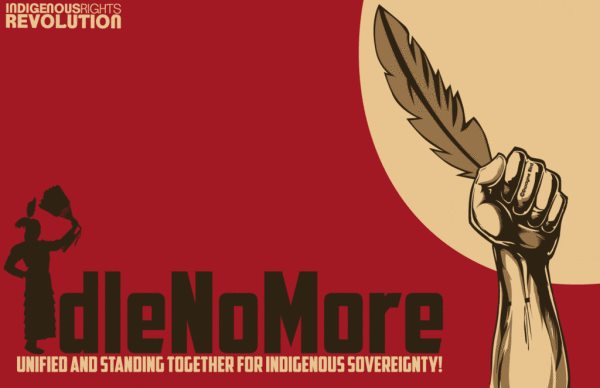
Idle No More (INM) has quickly become one of the largest Indigenous movements in Canadian history, sparking hundreds of teach-ins, rallies, and protests across Turtle Island and beyond. What began as a series of teach-ins throughout Saskatchewan to protest impending parliamentary bills—that would erode Indigenous sovereignty and environmental protections—has now changed the social and political landscape of Canada.
INM has and will continue to help build sovereignty and a resurgence of nationhood. INM will continue to pressure government and industry to protect the environment. INM will continue to build allies in order to reframe the nation-to-nation relationship, this will be done by including grassroots perspectives, issues, and concern.
6. INDIGENOUS ENVIRONMENTAL NETWORK
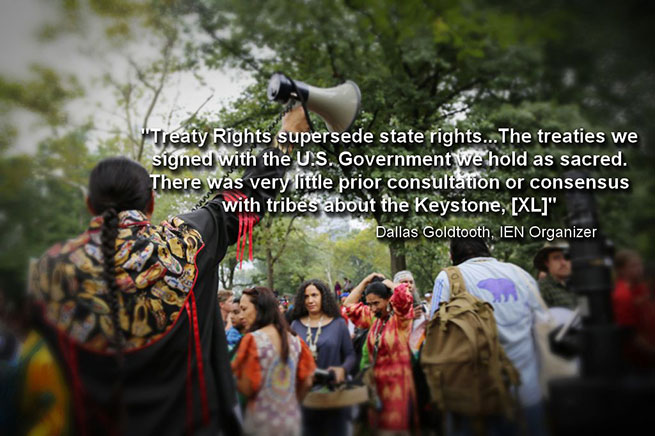
Indigenous Environmental Network (IEN) believes in unified action, sharing of information, and working together with mutual respect. IEN recognizes that Indigenous people must assert sovereignty and jurisdictional rights through the application of traditional laws and recognizing traditional forms of leadership for Indigenous nations
The members of IEN are unified in the recognition that traditional teachings, lifestyles, spirituality, cultures and leadership of Indigenous people—as well as the survival of future generations—are entirely dependent upon a respectful relationship with the natural world, and the responsibility to the sacred principles given to us by the Creator.
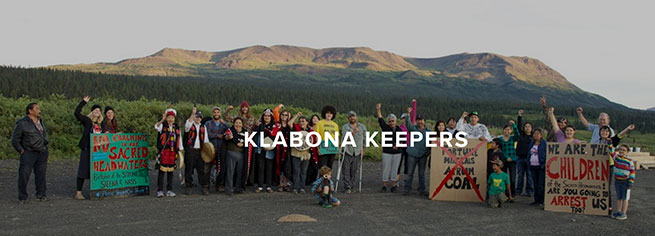
Klabona Keepers is an organization of Tahltan elders and families who occupy and use traditional lands near Iskut, British Columbia (BC) known as Tl’abāne, the Sacred Headwaters of the Stikine, Nass and Skeena Rivers.
Without Tahltan consent, the government has given an exploratory permit to Fortune Minerals, a mining company with a plan to turn Klappan Mountain into an open-pit anthracite coal mine, 4,000 hectares in size. The coal would be exported to a steel maker in Korea. The project plan includes building 147 kilometres of railway through the headwaters to export the coal, and a 112km power line linking the mine to the Northwest Transmission Line.

Oshkimaadziig Unity Camp is an organization within Anishinabek Confederacy To Invoke Our Nationhood (ACTION). Oshkimaadiziig in the Anishinabek Language refers to the New People of the Seventh Fire Prophecy who will pick up the many things left on the trail to ensure Humanity’s survival in the Eighth Fire.
Oshkimaadziig Unity Camp is a reclamation site located at Council Rock in Penetanguishene; “Land of the Rolling Sands” where Awenda Provincial Park now illegally occupies.
9. RAVEN (RESPECTING ABORIGINAL VALUES AND ENVIRONMENTAL NEEDS)

RAVEN is a non-profit charitable organization that provides financial resources to assist Aboriginal Nations within Canada in lawfully forcing industrial development to be reconciled with their traditional ways of life, and in a manner that addresses global warming or other ecological sustainability challenges.
Assisting the Beaver Lake Cree Nation in their efforts to stop the ecologically disastrous tar sands development is a chance to reverse a trend toward destroying the natural systems of the planet. Assisting the Tsilhqot’in Nation is a chance to prevent ecological disaster before it takes place. Teztan Biny (known as Fish Lake by settler communities) continues to be threatened despite TWO federal rejections of the proposed Prosperity Mine. Now Taseko Mines Ltd. has launched judicial reviews to challenge those decisions – meaning the Xeni Gwet’in and Tsilhqot’in Nations must continue to find funds.
10. UNIST’OT’EN CAMP
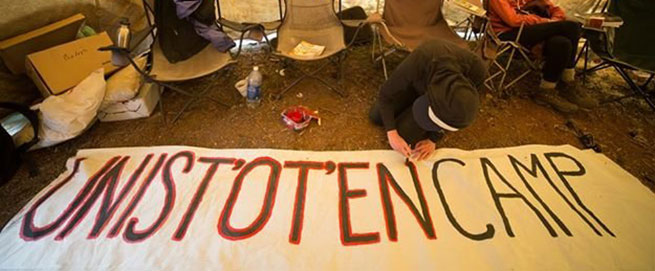
The Unist’ot’en Camp is a resistance community whose purpose is to protect sovereign Wet’suwet’en territory from several proposed pipelines from the Tar Sands Gigaproject and shale gas from Hydraulic Fracturing Projects in the Peace River Region.
The camp is located at the shore of the Wedzin Kwah and mouth of the Gosnell Creek. These are all tributary to the Skeena, Bulkley, and Babine Rivers. The proposed pipelines from Enbridge Northern Gateway and Pacific Trails both seek to cross the rivers at the exact point where the resistance camp is built on the Unis’tot’en Territory of Talbits Kwah.

The Yinka Dene Alliance includes Nadleh Whut’en, Nak’azdli, Takla Lake, Saik’uz, Wet’suwet’en, and Tl’azt’en First Nations in northern BC who have banned the Enbridge Northern Gateway Pipelines from their territories. “Our homelands have neither been surrendered nor negotiated away from us. The Enbridge Northern Gateway Pipeline Project threatens our legal and inherent right to decide what happens in our territories.”
This piece originally appeared on MUSKRAT Magazine and is reprinted with permission.

